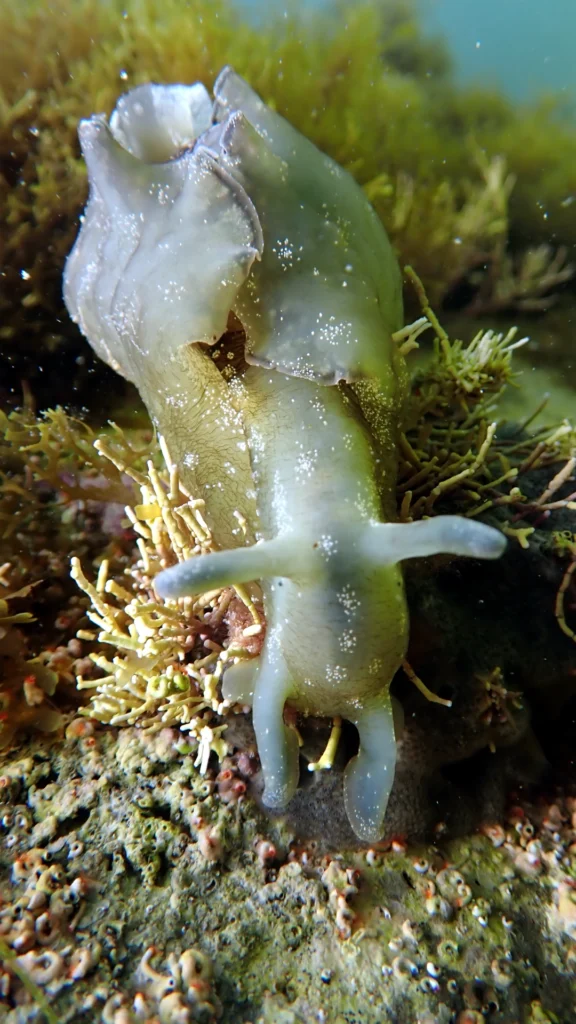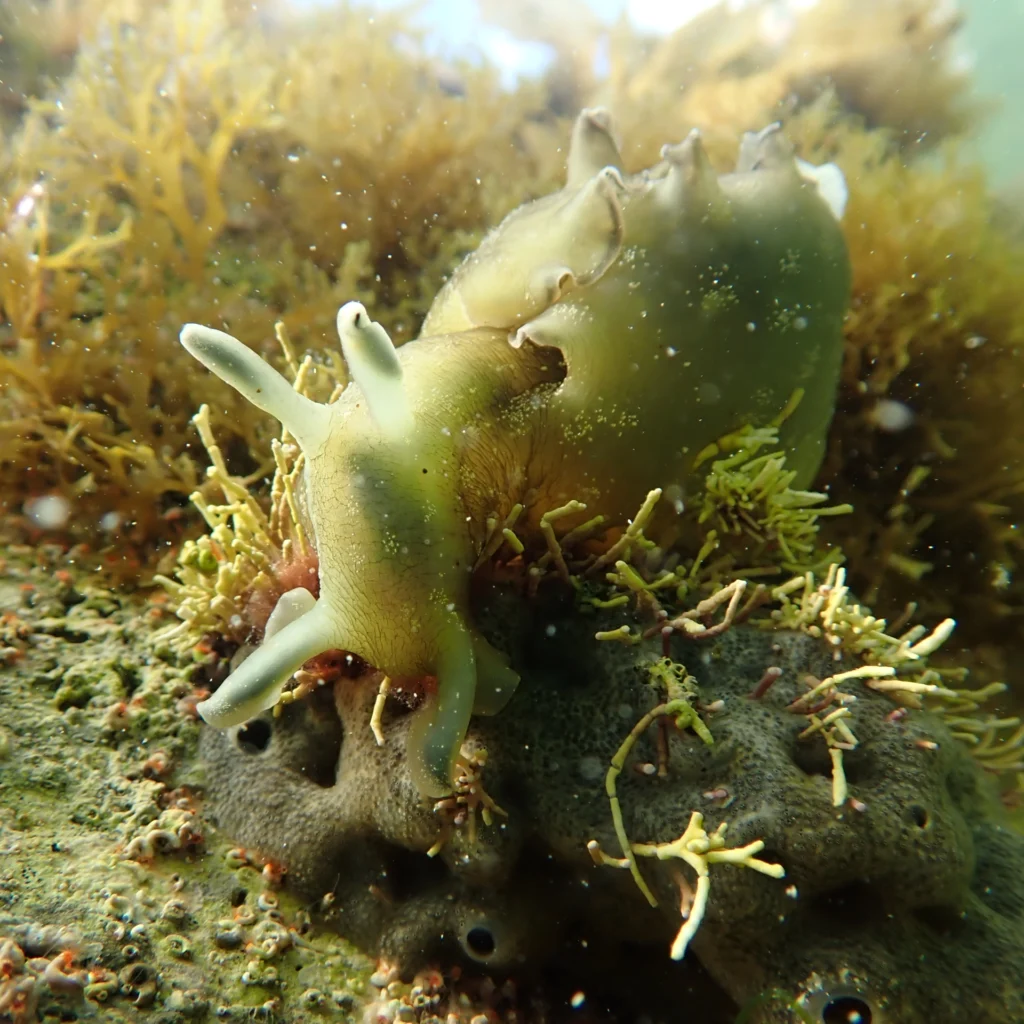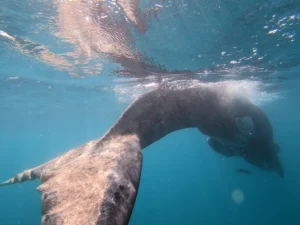Sea hares, scientifically known as Aplysia, are intriguing marine mollusks that belong to the class Gastropoda and the order Anaspidea. While looking very distinct from other marine gastropods due to their ‘shell-less’ appearance, sea hares do in fact have an internal shell, however it is soft and made of protein. These interesting creatures range widely in size, with the largest species, the black sea hare (Aplysia vaccaria), reaching lengths of up to 75 cm, subsequently classifying sea hares as the largest of the marine gastropods. Conversely, the smallest species, the dwarf sea hare (Aplysia parvula) reaches a maximum size of a mere 60mm.
Sea hares are predominantly found in temperate and tropical marine environments across the globe. They exhibit a preference for shallow coastal waters, seagrass beds, rocky reefs, and intertidal zones. When freediving and snorkeling in Cape Town, we often find them feeding on sea lettuce. These specialised herbivores are equipped with a rasping feeding organ known as the radula, with which they graze on macroalgae and seagrasses, breaking down plant cell walls to access the nutrient-rich content. Sea hare skin pigment is dependent on the colour of the algae they consume, allowing for effective camouflage. Moreover, sea hares are known for their ability to ingest toxic algae, sequester the toxins within their tissues, and deploy these toxins as a chemical defence against potential predators.

Sea hares are considered simultaneous hermaphrodites, which means that each mature sea hare possesses both male and female reproductive organs simultaneously. During their mating processes, they have the unique ability to engage in pairwise mating, where one sea hare acts as a male and the other as a female. However, during the mating season, they often gather in densely populated groups, leading to the formation of chains involving three or more sea hares participating in mating. Thereafter, sea hares can lay thousands of eggs, which are often deposited in gelatinous egg ribbons on substrates like rocks or seagrass.
Once hatched, sea hare larvae undergo a pelagic phase before settling back into their preferred habitat. This pelagic phase is crucial, as it allows for dispersal, genetic mixing, and colonisation of new areas. While at this stage in their reproductive cycle, sea hare larvae serve as an important link in the food web, providing sustenance for various marine organisms, including plankton feeding fish.

Their close semblance to slugs should not detract from their significance as a species however, as sea hares play a multifaceted role in marine ecosystems. Their herbivorous feeding behaviour can influence the composition of algal communities by selectively consuming certain species, which may have cascading effects on the entire ecosystem. Additionally, their ability to sequester and deploy toxins as a defence mechanism holds the potential to shape predator-prey interactions. Sea hares also contribute to nutrient cycling within their habitats, as their consumption of macroalgae and seagrasses results in the release of nutrients back into the water through their excretion, which can enhance primary production and benefit other marine organisms.
While sea hares are not typically targeted by commercial fisheries, they face threats from habitat degradation, pollution, and climate change. The health of their preferred habitats, including seagrass beds and rocky reefs, is essential for their survival. Conservation efforts should focus on preserving these critical ecosystems, which support the intricate web of life in which sea hares play a significant role.



